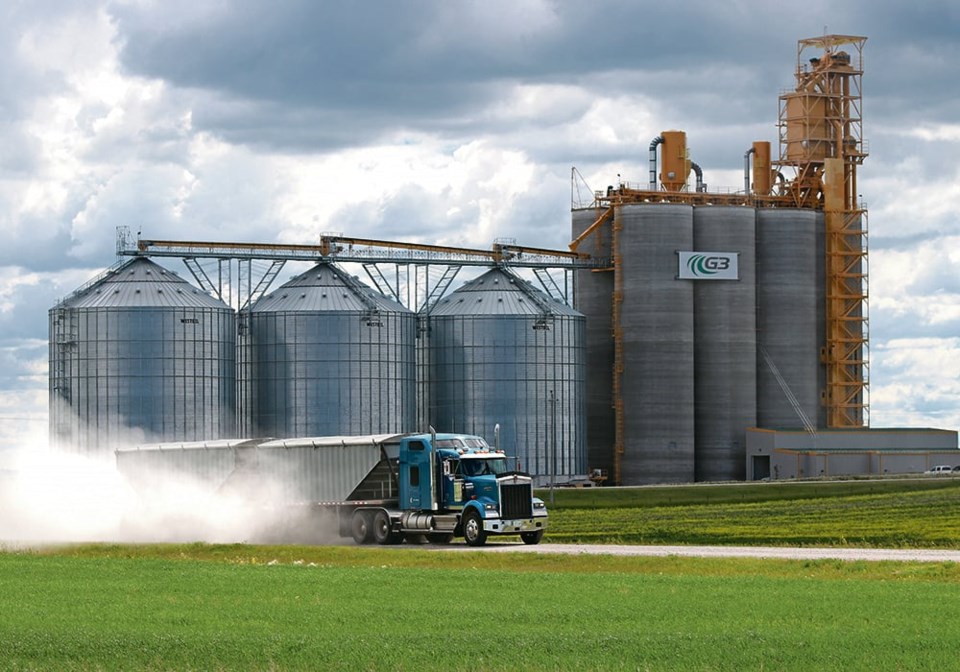SASKATOON — There is speculation that Bunge may have to sell its ownership stake in G3 Global Holdings to appease Canadian regulators scrutinizing its proposed takeover of Viterra.
G3 Global Holdings is the majority owner of G3 Canada Ltd., which operates 19 grain elevators in Western Canada and one in Quebec and port terminals in Thunder Bay, Hamilton, Quebec City and Trois Rivieres.
Farmers Equity Trust is the other investor, holding a minority interest in G3 Canada.
G3’s terminal elevator in Vancouver is owned by a separate subsidiary, G3 Terminal Vancouver Ltd. Partnership.
That subsidiary is also majority owned by G3 Global with a minority investment from Western Stevedoring Co. Ltd., which provides cargo-handling and logistics services to marine ports.
G3 Global is 75 per cent owned by the Saudi Agricultural and Livestock Investment Company (SALIC) and 25 per cent owned by Bunge.
“SALIC is a global agribusiness investment company wholly owned by the Saudi Arabian government through the Public Investment Fund of Saudi Arabia,” Canada’s Competition Bureau stated in its recent report to transport minister Pablo Rodriguez.
The bureau provided no recommendations in its report, instead just highlighting some of its concerns for the minister.
The bureau believes Bunge’s ownership stake is significant enough that it can influence G3’s business decisions, including expansion plans in Canada.
“Bunge’s acquisition of G3’s largest competitor, Viterra, will increase Bunge’s incentive to stymie G3’s growth into product or geographic areas where Viterra is already present to the detriment of competition,” said the bureau.
Viterra operates 66 grain elevators in Western Canada, providing stiff competition around every one of G3’s 19 facilities. The two firms compete for crops such as canola, wheat, durum, rye, barley, peas, corn and soybeans.
Together they own one-third of all primary grain elevator capacity in Western Canada. In addition, they own five canola crushing facilities and a bunch of port terminals.
The bureau is concerned that Bunge-nominated directors to G3 Canada’s board hold veto rights over significant decisions.
They also have access to competitively sensitive confidential information about G3.
“The proposed acquisition of G3’s rival Viterra will increase Bunge’s incentive to influence G3’s economic behaviour to the detriment of the company,” stated the bureau.
G3 has been an aggressive competitor to Viterra, building 12 new elevators since the company was first established in 2015. They are often large facilities with loop tracks for more efficient grain loading.
The bureau said G3 is the fastest growing grain company in Western Canada and plans to continue expanding its operations in that region.
“G3 often plays a disruptive role in the origination of grains in Western Canada,” the bureau stated in its report.
“G3 is perceived to be a competitor aggressively gaining market share from established grain companies like Viterra and offering higher prices to farmers in order to purchase grain.”
Academics believe the bureau is strongly hinting that Bunge needs to sell its 25 per cent stake in G3 Global Holdings to minimize the anti-competitive impact of its proposed acquisition of Viterra.
“That was my interpretation of reading that report, and we would concur with that,” said Richard Gray, an agricultural economist at the University of Saskatchewan and one of the authors of a report on the merger prepared for a collection of farm organizations.
But who would buy Bunge’s minority share in G3 Global?
Gray said the most obvious candidate would be SALIC, a firm with deep pockets.
The company has already demonstrated a willingness to strengthen its ownership position. In 2016, it bumped up its stake in G3 Global to 75 per cent from 49 per cent.
But he wonders how much of an international grain marketing presence the company has without the expertise of Bunge.
“I’m not sure SALIC is set up for that,” said Gray.
One of his biggest concerns about the merger is that it would result in more than 40 per cent of the export capacity at the Port of Vancouver controlled by one firm.
It would not help that situation much if Bunge sold its share in G3 to one of the other major exporters that also have assets at the port, such as Cargill or Richardson International.
“The only way it would address competition is if it was sold to some firm that’s currently not in Vancouver,” said Gray.
Archer Daniels Midland is the only major North American multinational he can think of that has no port assets in Vancouver.
The Competition Bureau is not as concerned about a lessening of competition at the port. It said Viterra and G3 are not actively offering terminal elevator capacity to third parties, so there won’t be reduced choice to third-party users of terminal elevators.
The bureau also noted there is significant excess capacity at terminal elevators in ports in Eastern and Western Canada.
Gray said there is another scenario to consider if Ottawa forces Bunge to sell its stake in G3 Global.
“In the end, Bunge might just walk away and say, ‘it’s not worth it,’ ” he said.
“They may not take the deal if they’re forced to sell it. That is quite a likely outcome.”




